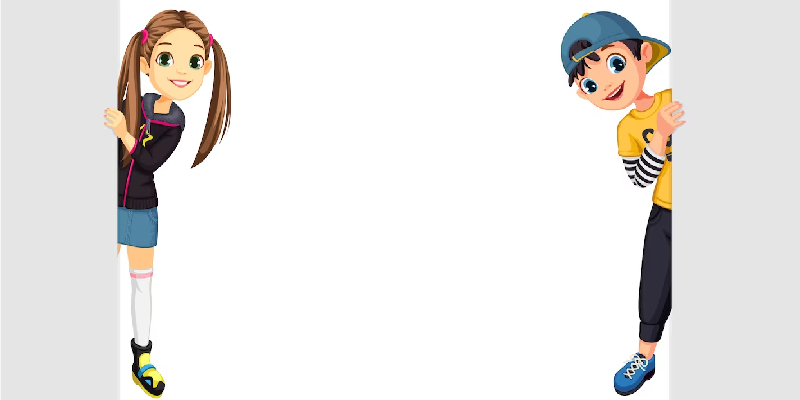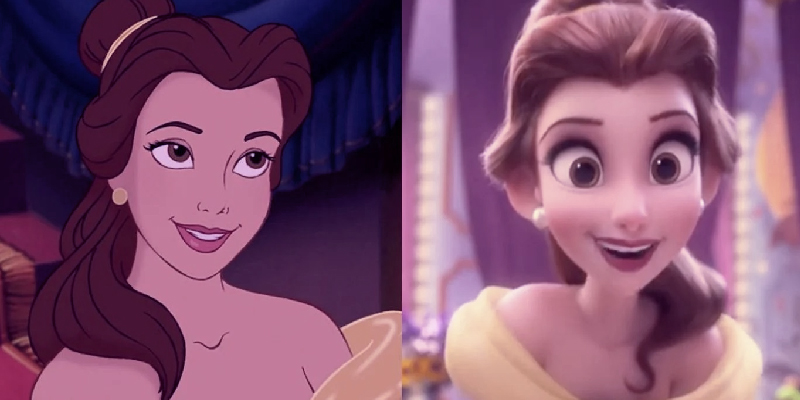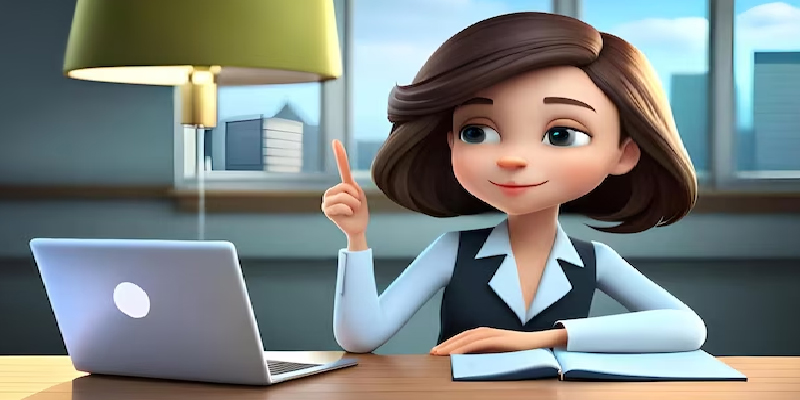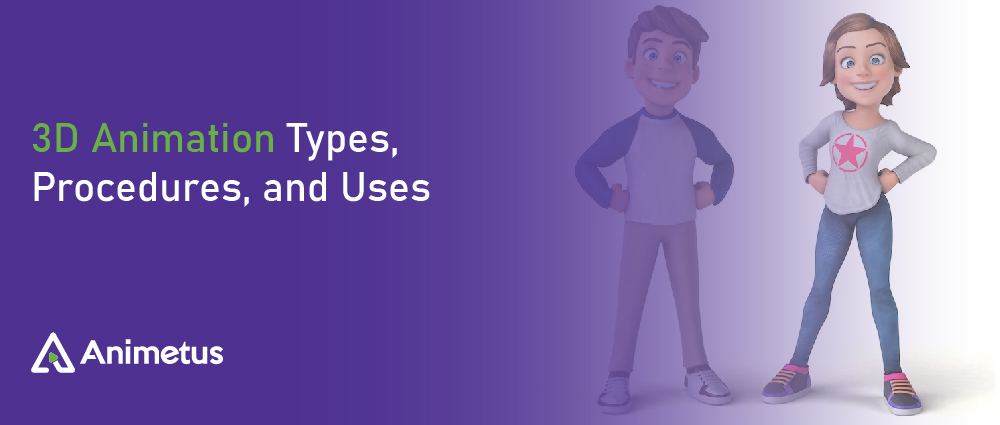3D animation brings digital objects to life by creating the illusion of movement within a three-dimensional space. Despite being displayed on a two-dimensional screen, these computer-generated elements aim to mimic real-world 3D principles. This results in lifelike rotations and movements, providing a comprehensive 360-degree perspective.
Initially, 3D animation was mainly used in video games, TV, and movies, as seen in Pixar’s early work, such as “Toy Story.”
Today, the value of 3D animation extends across various digital domains, from promotional materials to medical imaging. This article, authored by our experts in 3D animation services, gives a brief overview of 3D animation, encompassing:
- The importance of 3D Animation
- Contrasts between 2D and 3D animation
- Uses of 3D Animation
- The process of crafting 3D animation
- The qualities of 3D animation
What is 3D animation?

At its core, 3D animation is dynamic three-dimensional visuals within a digital zone. Using 3D software, animators can craft objects with a lifelike three-dimensional appearance despite being showcased on a two-dimensional surface. This makes objects seem like they’re moving in a 3D world.
From characters in video games to vehicles in advertisements, the artistry lies in using visual effects in precise timing to create this animation.
Differences between 2D and 3D animation

The difference between 2D and 3D animation is the addition of the third axis, known as the z-axis, in 3D. Unlike the flatness of 2D imagery, 3D animation infuses depth, as exemplified by movies like “Frozen” and “Ice Age” in contrast to the 2D classics such as “Sleeping Beauty” and “Bambi.”
Technical processes characterize this distinction. While 2D animations entail crafting sequential drawings on a flat plane, creating 3D animations involves working within a three-dimensional framework, often based on tangible physical models.
Although both realms benefit from animation software, the methodology to infuse motion differs.
Traditional hand-drawn animations like “Bambi” have evolved into quick computer-generated 2D animations, while 3D animations rely on intricate modeling to operate in the three-dimensional space. Further insights into the crafting of 3D animation are detailed below.
Ways to Utilize 3D Animation

Initially, 3D animation found its inception in the realms of gaming, television, and film. However, its uses have expanded significantly beyond these initial domains. From corporate advertising campaigns to architectural modeling and medical research, 3D animation has found diverse value across numerous industries. Below is a concise overview of the general uses of contemporary 3D animation.
Television and Film

3D animation is frequently used in character animation within television and film. This technique infuses characters with enhanced lifelikeness, increasing the emotional connection established with audiences. 3D-animated characters possess a vivid and captivating quality resemblance to interactive toys.
This feature is especially advantageous for children’s entertainment. Films like the “Frozen” series exemplify this, where elements such as Elsa’s ability to transform objects into ice attain a deep magic in 3D.
Also, scenes featuring characters singing, dancing, and twirling acquire good impact through 3D animation, including portraying suitable facial expressions.
Gaming
The zone of video games also benefits from 3D animation realism, intensifying the player’s engagement. This deep sense of reality enhances the excitement during battles or challenging obstacle courses. Moreover, 3D animation seamlessly aligns with virtual and augmented reality effects, engaging players in real-time immersive environments. For instance, “Horizon Zero Dawn” expertly exploits 3D technology to amplify the intensity of the game’s physical challenges, creating an adrenaline-fueled experience.
Corporate Presentations
3D-animated features have transformed conventional corporate presentations, dismissing the monotony of static PowerPoint slides. Such presentations captivate audiences, getting enjoyable attention throughout. Microsoft’s tutorial showcasing a drone in flight is a compelling illustration of the captivating nature of 3D presentations.
Marketing
In marketing, 3D animation is a potent tool for showcasing product attributes in a lifelike manner. It enables audiences to grasp the product’s appearance more tangibly. Brands can hold 3D animation for product demonstrations and tutorials, improving the consumer’s understanding of product functionality. Furthermore, skillfully crafted 3D-enhanced video advertisements can retain viewer interest in an era of quick attention spans. An example of a visually dynamic ad is the Nespresso commercial, which successfully conveys its message in just 30 seconds. The message is that Nespresso on ice helps you relax.
Architecture and Design
3D animation is invaluable in generating realistic depictions of architectural designs before their physical realization. By incorporating virtual and augmented reality tools, architects can immerse themselves within and navigate through their creations. This utility extends to interior design, providing designers with a tangible preview of room aesthetics.
For instance, architects can have a detailed virtual model using 3D animation before constructing a new building. This permits them to examine the layout, design, and aesthetics realistically before construction begins.
Prototyping
Fusing 3D animation and 3D printing produces a cost-effective avenue for creating product prototypes. Industries ranging from engineering to medical technology can economize on resources and time by visualizing and crafting prototypes before final production. This iterative process empowers businesses to refine their products based on prototype outcomes.
Medicine
Within the medical sphere, 3D animation finds multifaceted value. It is an educational tool that offers detailed insights into the human body and medical procedures. Particularly within surgical domains where experimentation is constrained, 3D animation proves indispensable. Furthermore, medical animation enhances patient communication, aiding in conveying procedural expectations. A notable instance is Philips Healthcare’s illustrative video.
3D animation with virtual reality can also help patient anxiety during medical procedures like MRI scans. Presenting lifelike scenes, such as serene beaches or forests, mitigates patients’ discomfort, enhancing the care quality.
Simulations
Lastly, 3D animation is helpful in diverse simulations. It enhances employee training through accessible, on-demand 3D videos, minimizing the need for resource-intensive mass training sessions. Remarkably, even renowned brands like Audi adopt 3D animation in combination with virtual reality for comprehensive employee training experiences.
In case you are looking for expert 2D and 3D animation services for any of these? Explore our professional video animation company and unlock a world of creative possibilities with our 3D and 2D animators. Connect with us today to bring your vision to life!
The 3D Animation Process
The realm of 3D techniques transforms flat, two-dimensional figures on screens into compelling three-dimensional objects that appear to move within a dimensional space. A professional animation can cause the illusion of reaching out to interact with the seemingly tangible 3D elements, only to encounter a screen’s surface. How is 3D animation crafted? Presented here is an introductory guide to the process of 3D animation.
Modeling
The initial phase needs the creation of 3D objects that form the foundation for animation. This process involves using a modeling tool to create a 3D mesh from simple shapes. Animators refine and shape these basic shapes into the desired form. Then, they add colors and textures to the 3D models. Following this, they establish a skeleton for the animated character through rigging, enabling the character to move naturally.
Layout and Animation
Proceeding, the 3D Animator goes to actual animation. During this phase, the Animator imparts motion to the 3D object. Various techniques are employed, ranging from keyframing—incremental object movement across frames—to utilizing motion capture data.
Rendering
When you’ve got the animation, lighting, and camera angles just right, you move on to the rendering phase. This is where you turn your ideas into pictures you can see. The ultimate render of the 3D character undergoes refinements based on factors such as lighting, shadows, reflections, transparency, and complex details.
Advantages of 3D Animation
As discussed, 3D animation has been shown value across diverse domains, from advertising to medical research and architectural design. Many industries are adopting advanced visual techniques due to their numerous compelling benefits. Here are some of the distinct advantages offered by 3D animation.
Enhanced User Engagement
3D animation excels at developing user engagement by crafting vivid and captivating imagery. This deep allure is helpful across various contexts, such as video games, marketing endeavors, and corporate presentations. The technique entices viewers, sustaining their attention and fostering active involvement. Notably, professional animation boosts the possibility of sustained alertness and engagement.
Broad Audience Appeal
The appeal of 3D animation beats demographic boundaries, making it an effective tool for attracting diverse audiences. Moreover, its potential for targeting large crowds is substantial. Displaying 3D animations on wide screens can get attention within sizable gatherings. For instance, the implementation of 3D animation on digital billboards can create a significant impact within crowded environments.
Enhanced Communication
3D animation enables the creation of lucid visuals that capture real-world impressions. This attribute enhances communication efficacy, eliminating vagueness, especially when conveying a complete product view. The visual strength of 3D animation clarifies messages and forges emotional connections, thereby increasing the efficacy of communication.
Powerful Branding Tool
3D animation allows businesses to convey their brand essence and provide insights into products, services, and vision. Enterprises holding this avant-garde technology can position themselves as modern and forward-looking brands in the eyes of consumers. This effectively conveys the brand’s identity and supports the view that you are a forward-thinker.
Are you seeking Help? Call our 2D or 3D Animator Now!
Are you desiring to use the skills of 3D animation techniques for your brand or enterprise? Discover the suitable professional to create the captivating 3D animation you can expect with our video animation company, Animetus.
You can identify the top 3D and 2D animators with us and embark on your quest for the best 3D animation services today.

